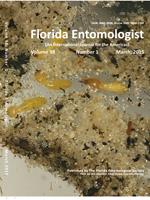The citrus red mite, Panonychus citri (McGregor) (Trombidiformes: Tetranychidae), a highly destructive pest in citrus groves around the world, has developed resistance to many registered acaricides. Hexythiazox is a selective miticide that has been widely used to control citrus mites in a variety of crops. Forty-six cytochrome P450 mono-oxygenase genes related to general pesticide resistance in other insect species were obtained from the transcriptomes of the hexythiazox-resistant (RR) and hexythiazox-susceptible (SS) strains of P. citri and divided into 4 clans, 15 families and 24 subfamilies. Sequence analyses of each CYP resulted in detection of 3 mutationsin the CYP307A1 gene (841-A to C, 1395-T to C, 1491-T to C) that differed between the 2 strains. Only the change at an amino acid position (278-lysine to glutamine) resulted in a sense mutation. One SNP site was also detected in CYP381A2 (40-A to T) causing a sense amino acid mutation (14-threonine to serine). Seven of these P450s belonged to the CYP2 clan, CYP3 clan and CYP4 clan based on digital gene expression (DGE) library sequencing with a |log2 ratio| value greater than 2, but there were no significant differences revealed by qRT-PCR analysis. This study provides essential information for future research on the hexythiazox-resistance mechanism of P. citri. More methods are needed to further elucidate the molecular mechanisms of resistance to hexythiazox in P. citri.
How to translate text using browser tools
1 March 2015
Differential Analysis of the Cytochrome p450 Acaricide-Resistance Genes in Panonychus citri (Trombidiformes: Tetranychidae) Strains
Gaofei Jiang,
Yunfei Zhang,
Fei Chen,
Junli Li,
Xiaojiao Li,
Jiansu Yue,
Haoqiang Liu,
Hongjun Li,
Chun Ran

Florida Entomologist
Vol. 98 • No. 1
March 2015
Vol. 98 • No. 1
March 2015
ácaro rojo de los cítricos
análisis de RT-PCR
análisis diferencial
citocromo P450
citrus red mite
cytochrome P450
differential analysis




